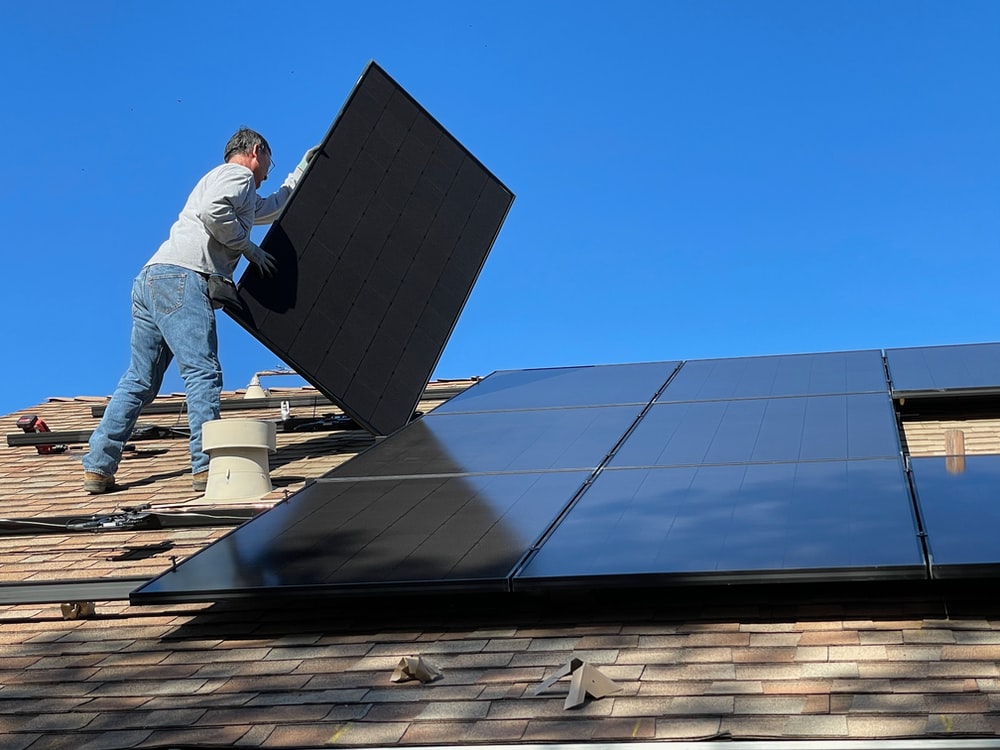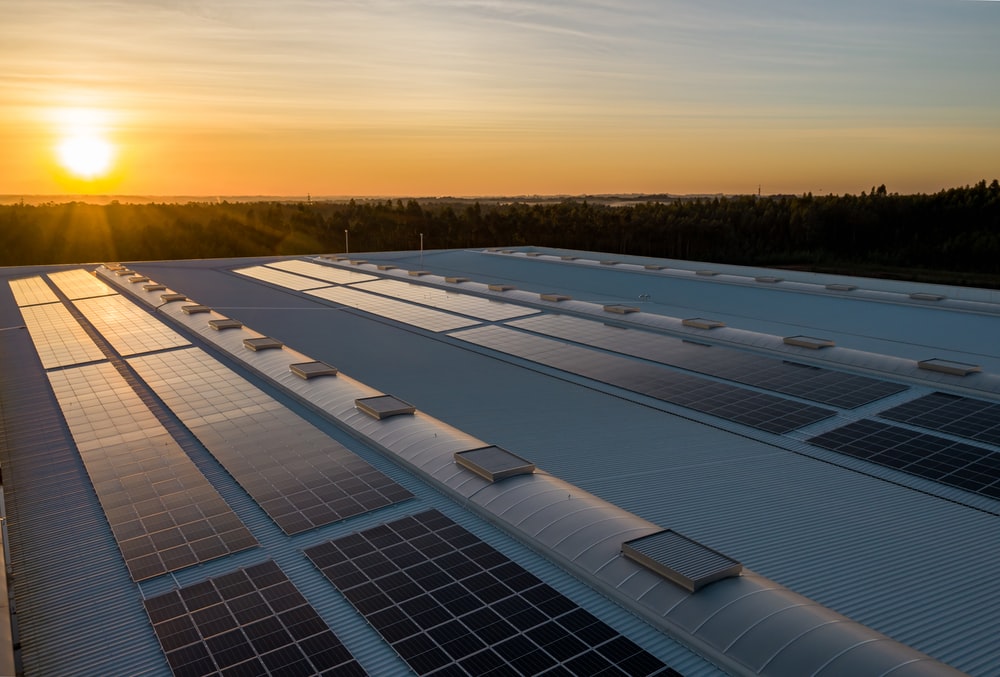Today nearly 3 million Australian households are using solar energy to generate power for their homes. Using renewable energy from the sun to create solar energy makes for an inexpensive and sustainable energy source and saves you a lot of money on your electricity bills.
So if you’re considering making your life more energy efficient by installing solar panels on your property, then one of the first questions you should ask is ‘how are solar panels installed? But don’t worry, as this article discusses everything you need to know about the solar panel installation process, from how long it takes to what you need to install panels.

Man in white dress shirt and blue denim jeans sitting on white and black solar panel
Types of Solar Systems For Homes and Commercial Businesses
More people around the country are now exploring solar power for their homes. However, if you are looking to generate power from solar panels installed in your house, you should be aware of the different types of solar systems available.
It would be best to do your research before deciding on solar panel installations instead of installing solar panels that your neighbours or friends have done. It is simply because every property has different requirements, and not all kinds of solar systems are suitable. Things like roof space or clear space for unobstructed sunlight define solar panel installations.
Connected To The Grid – Without Batteries
It is the cheapest and easiest solar installation. Since it connects to your local utility or grid, there is no battery backup for the generated energy, and your house will consume the energy it requires.
If your solar PV system generates more energy than the energy usage you need, it is sent to the grid-connected with your solar system. In return, you may get a credit amount.
This type of solar panel installation has a pitfall – if the power goes out on the grid-connected to your home or office, you will not have power on your property either.
Connected To The Grid – With Solar Battery
The only difference in these PV systems is that you are connected to batteries that provide space for energy storage. You will always have backup electricity if your lights go out.
If you generate more solar energy than required, the excess will go to the grid. Generally, these systems are installed in hospitals because they have specific needs for a solar inverter.
Not Connected To The Grid
The solar system does not connect to the utility or local grid in this installation. The system will generate, store and use its power without additional help. It is essential to know your electricity usage when installing this solar system.
In most cases, you will find this system in rural areas where connecting to a grid is impossible. Installing solar panels in this system can be tricky and not recommended for people living in big cities.

Black and white solar panels
Types Of Solar PV Panels For Your Home
Before installing solar PV panels, you will need to choose the type of new solar panels installed. Make an informed decision by learning about the different types of solar panels:
Solar Photovoltaic Panels
These panels are very common solar panels installed in homes in Australia and are also called Crystalline Silicon panels. It is known to be 20% energy efficient and is perfect for a small roof.
Thin Film Solar Panel
Thinner and more flexible than solar PV panels, but is far less efficient. It has an efficiency of 6% to 11% and, in most circumstances, requires you to install solar panels in more significant numbers.
Solar Thermal Panels
Solar thermal panels are usually used for heating water instead of generating electricity. It helps reduce the cost of gas, as seen in commercial buildings.
Types of Mounting Systems
During the installation work, there are different mounting systems your solar installer may use depending on factors such as roof direction, space, and others. To identify the correct mounting system for your home, read on.
Direct Mounted
This mounting system is the most effective since it is installed directly on your roof, especially if the roof direction is south facing, believes most solar installers. When the sunlight is not too high, the tilt makes it the most effective.
Tips For Switching To Solar Energy
Suppose you have recently decided to switch to solar energy and want to install solar panels in your home or office to reduce the cost of your electricity bill or want to live a sustainable lifestyle. In that case, these tips will help you through the process.
- Find a reliable solar company to help with the actual installation.
- Get your site assessed and approved for the installation process
- Check if the electrical wiring in your property needs to be changed
- Do your research into how to install solar panels and different types of equipment
Installing solar panels can be tricky, and that’s why you need the best advice throughout the process. Get in touch with a reputable solar company such as Symons Energy to help you find the best solution to your solar needs.
Call For The Best Solar Installers
When it comes to installing solar panels, Symons Energy is one of the best solar installers in Australia. They have been providing exceptional service for more than a decade and have built a reputation as a trustworthy and reliable solar company.
We have accredited installers for all your solar requirements and can help you decide on the best type of solar installation to suit your need. Whether you need a solar inverter, we can schedule the solar panel installation process at a time that works best for you.
We are known for exceptional service for residential and commercial properties and for providing the highest quality solar power storage equipment. If you are switching to solar power, call us today at 1300 764 162 or click here and let the experts help you make the right decision.
